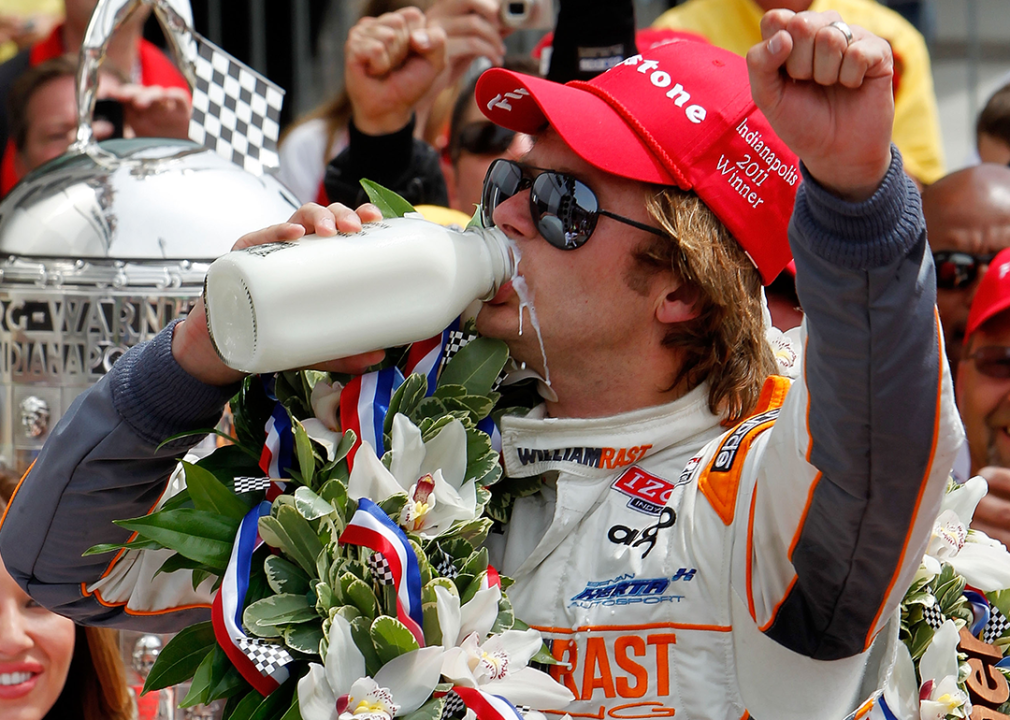
Why Indianapolis 500 winners drink milk and the history of other race-day traditions
It's called the "greatest spectacle in racing," but fantastic auto racing isn't what makes the Indianapolis 500 one of the most iconic auto races of the year—the race traditions do.
Stacker compiled five of the race's quirky traditions, sourcing information from the Indianapolis Motor Speedway and other news outlets.
Although the race takes place on the Sunday of Memorial Day weekend, festivities around it encompass May. Festivals, a minimarathon, and an annual parade attract hundreds of thousands of people to downtown Indianapolis. College-aged women vie to become one of 33 (equaling the number of drivers in the field) 500 Festival Princesses, who serve as ambassadors for the many race-related events. In Speedway, Indiana, the town surrounding the Indianapolis Motor Speedway, decorated homes welcome race fans to the world's largest stadium, which seats 235,000 people, though it was known to host up to 400,000 people in 1990.
Drivers also have traditional events as they try to become one of the 33 to make the final starting field. In mid-May, they have three days of practice on the track before "Fast Friday," when cars get turbocharge boosts to achieve top speed. Then it's on to two days of qualification, where drivers race solo for four laps of the track, pushing their car to its limits. If more than 33 drivers are vying to make the field, the second day is also known as Bump Day, for those who get bumped from the final starting lineup.
Carb Day—shortened from Carburetion Day, since the cars no longer have carburetors—is the last day of practice for drivers and crews. A fan-focused event, it includes a pit stop challenge and rock concert.
Despite the month's high-octane festivities, they are no match for what happens on race day, where more traditions help set this race apart from all others.
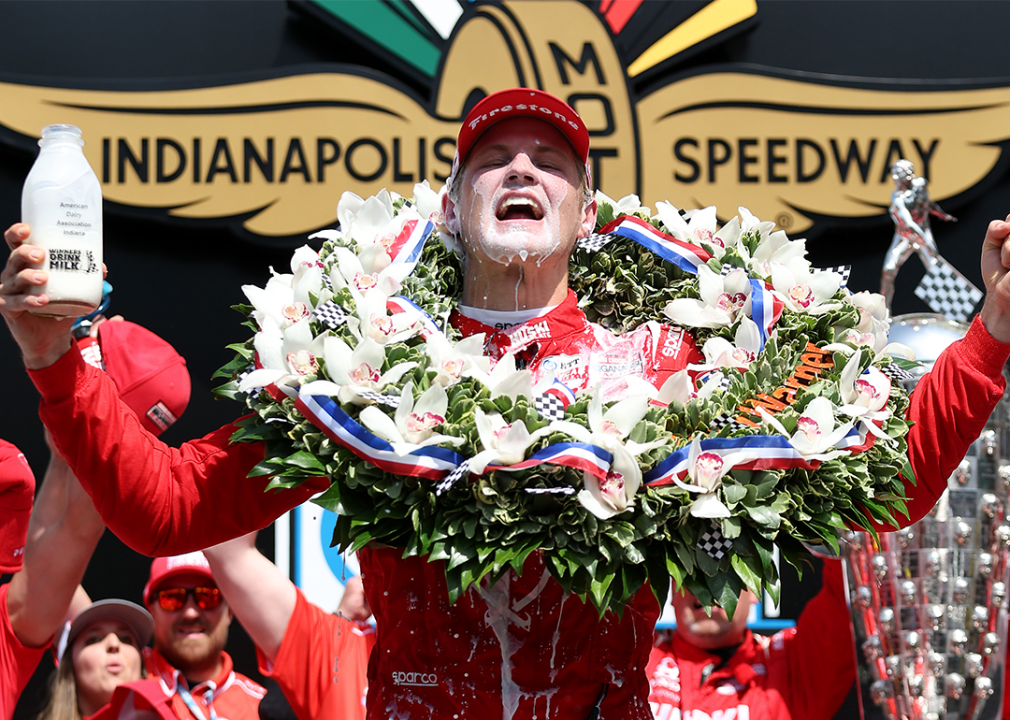
Drinking milk after the win
The storied tradition of drinking milk began as most favorite traditions do: by accident.
When Louis Meyer, the first driver to win three Indy 500s, was caught on camera sipping buttermilk straight from the bottle while he sat in Victory Lane after his third win in 1936, dairy industry executives saw that as a prime marketing opportunity. Milk vied with water as the victor's drink of choice for many years, but in 1956, the dairy industry offered prize money to the driver and chief mechanic for swigging milk after the win. Since then—except in 1993, when Emerson Fittipaldi drank orange juice first in honor of his 500,000-acre orange plantation—the sip of milk has become a time-honored tradition.
Today, all drivers choose their preferred milk—fat-free, 2%, or whole milk—before the race so the dairy association can have it ready to go for the winner.
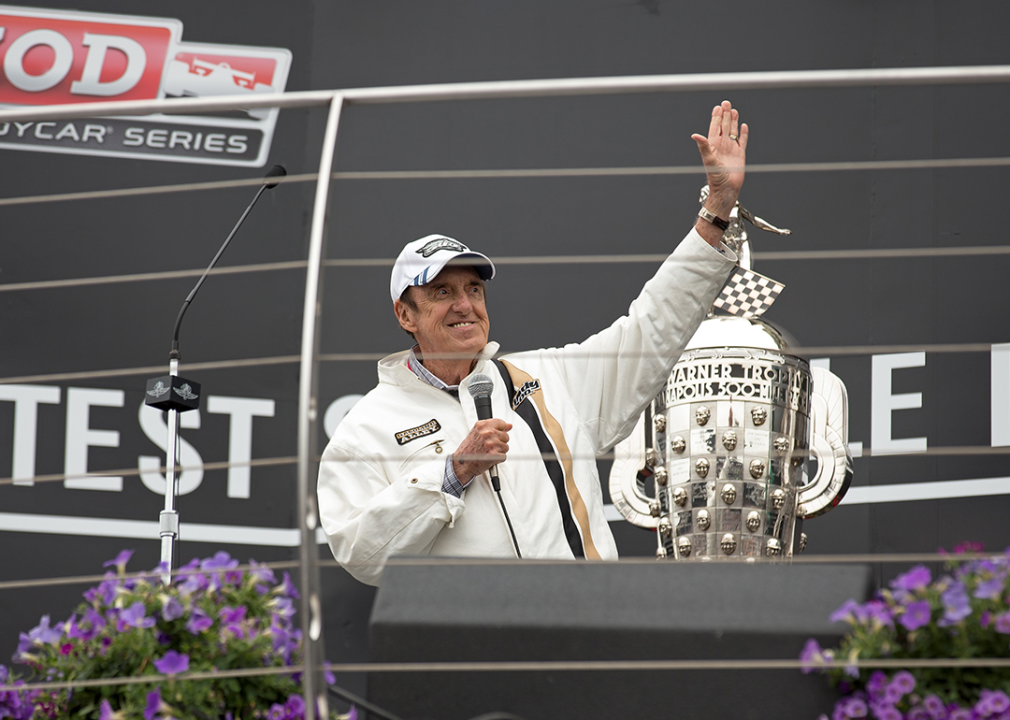
Singing '(Back Home Again In) Indiana'
The "greatest spectacle in racing" made a four-year pit stop between 1942 and 1945 due to World War II. When the race returned in 1946, organizers asked New York Metropolitan Opera singer James Melton to sing this ballad to welcome back drivers and fans. People loved it so much that the song became part of the prerace festivities, and Melton returned to sing it many times.
Throughout the years, other famous celebrities, including Mel Tormé, Vic Damone, and Dinah Shore—the only woman to ever perform it—all participated in this tradition, but no one did it more often than Jim Nabors, an actor known for playing Gomer Pyle on "The Andy Griffith Show" and "Gomer Pyle, U.S.M.C." Nabors fell into the gig in 1972, when Indianapolis Motor Speedway owner Tony Hulman found him sitting in the grandstands and asked him to sing. Although Nabors had no idea what he was going to perform, he was a big hit with the fans and ended up coming back another 36 times before retiring in 2014.
Since then, race organizers have asked singers who have ties to the state to perform the song, and in 2017, they hit the jackpot with Indiana University alum Jim Cornelison, who has sung it annually ever since.
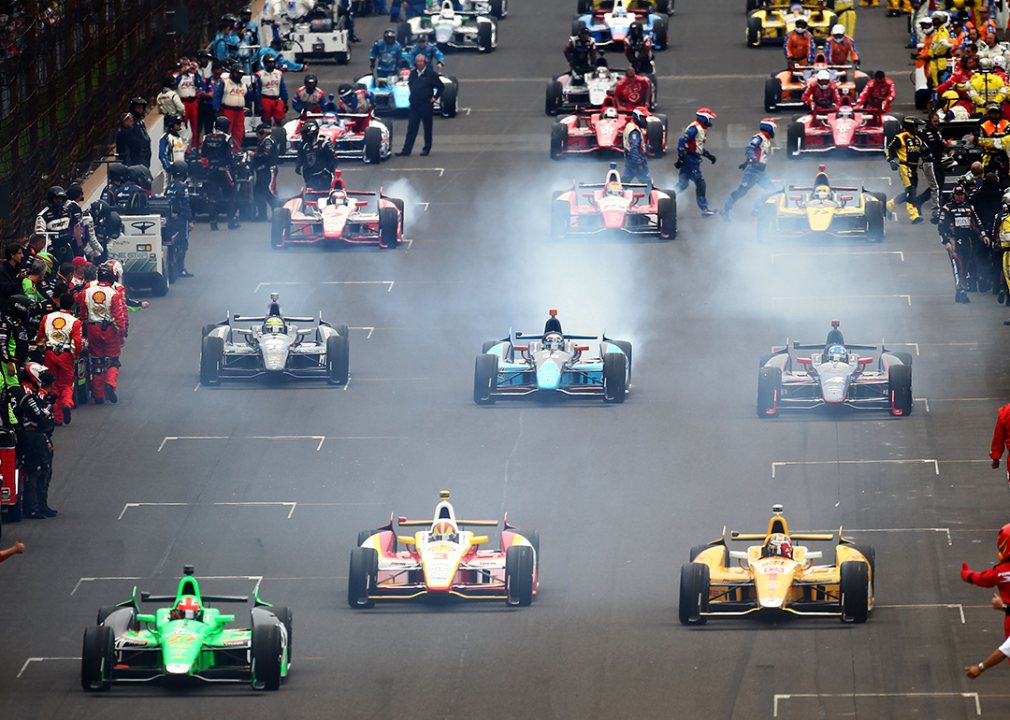
'Drivers, start your engines'
The cue to start up the Indy cars is one of the most anticipated moments of the prerace festivities, but it hasn't always been part of Indy 500 traditions.
In the early days of the race, aerial bomb explosions gave the signal, but after the race returned after a World War II hiatus, public address announcer John "Irish" Horan thought the moment needed a little more oomph. The first record of him saying something close to, "Gentlemen, start your engines," came in 1951; by 1953, the tradition took hold.
The phrase changed in 1977, when Janet Guthrie became the first woman to ever qualify for the Indy 500, causing track owner Tony Hulman to announce, "In company with the first lady ever to qualify at Indianapolis, gentlemen, start your engines!"
As more women made the starting field, the phrase became, "Ladies and gentlemen, start your engines," which has evolved to today's, "Drivers, start your engines!"
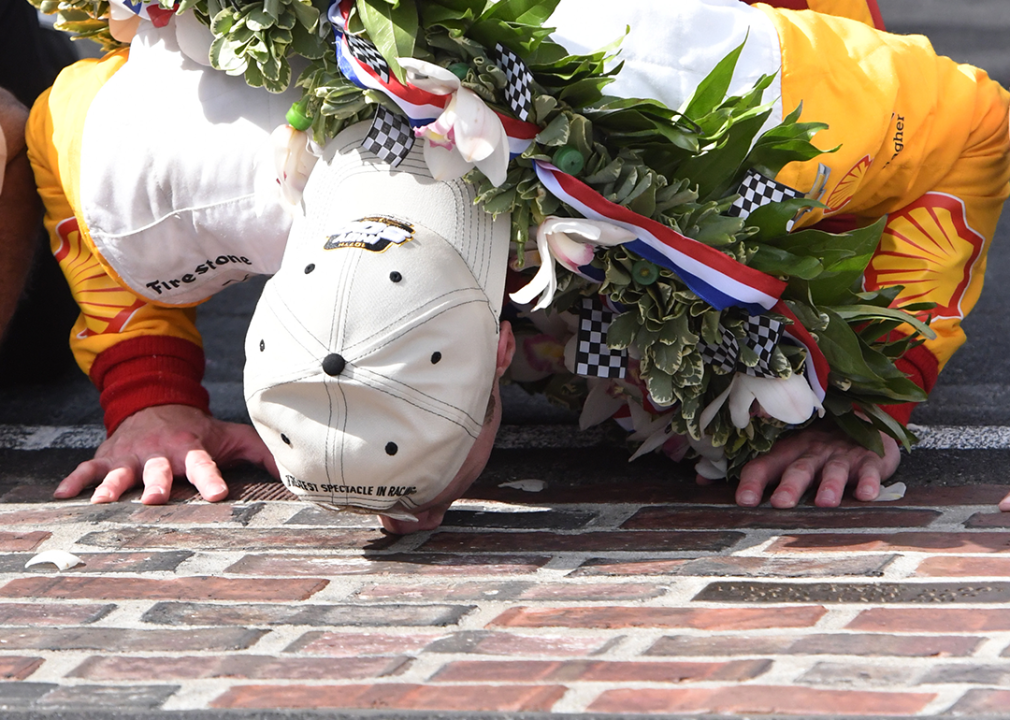
Kissing the bricks
Postvictory, winners and their teams kneel in front of the 1-yard span of bricks—one of the track's earliest surfaces—at the finish line and ceremoniously kiss them. A newer Indy 500 tradition, it began at the Brickyard 400, Indianapolis Motor Speedway's NASCAR race. In 1996, Dale Jarrett won the third edition of the Brickyard 400, and he and his crew commemorated the victory by kissing the bricks. Subsequent winners continued to do so, but it took a few years for the tradition to jump to the Indy 500 race.
It's unclear who was the first Indy 500 winner to kiss the bricks—the Indianapolis Motor Speedway believes 2005 winner Dan Wheldon may have been the first. Still, the Indianapolis Star cites 2003 winner Gil de Ferran as the original Indy 500 brick kisser.
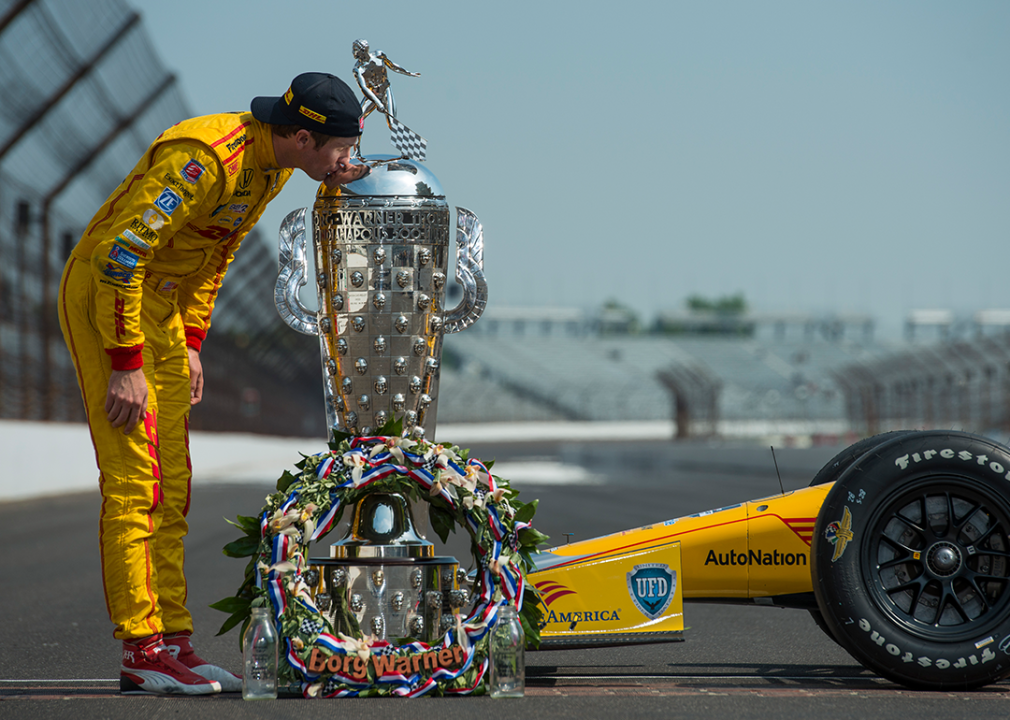
The Borg-Warner Trophy
All winners are immortalized on the Borg-Warner Trophy, named for the automotive equipment manufacturer that commissioned it.
Debuted at the 1936 race, the art deco-style sterling silver cup is ringed with sterling sculptures of the winning drivers' faces. The original cup ran out of room after 70 winners, so today's trophy includes a large base to accommodate winners through 2033. The extra base makes today's trophy one of the largest in sports, clocking in at over 5 feet, 4 inches tall and weighing about 110 pounds. In 2022, Refinitiv Metals Research estimated its melt-down value at $40,537.
Drivers may race to win the Borg-Warner Trophy, but they never get to take it home. Instead, Borg-Warner gives winning drivers a miniature replica of the cup—called a "Baby Borg"—that includes an identical sterling silver sculpture of their face.
Story editing by Carren Jao. Copy editing by Paris Close.
More must-reads:
- Veteran WR announces retirement after nine seasons
- Star Padres infielder to miss significant time with shoulder injury
- The 'Leading scorers from the 2003-04 NBA season' quiz
Breaking News
Customize Your Newsletter
 +
+
Get the latest news and rumors, customized to your favorite sports and teams. Emailed daily. Always free!

